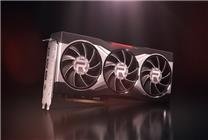Summary
- Memory prices are projected to increase significantly by 30% in Q4 2025, following a previous rise of 50% earlier in the year.
- The primary impact is on traditional LPDDR4 memory, with tight supply due to transitions to advanced technologies meant for AI.
- Manufacturers are ramping up production capacity, but the shortage of older specifications will persist in the short term.
The Evolving Landscape of Memory Chip Pricing
In a significant development, recent insights predict a noteworthy increase in memory prices, specifically in the realm of DRAM chips. According to the latest analysis from industry experts, memory prices are expected to soar by 30% in the fourth quarter of 2025. This comes after an already steep surge of 50% earlier in the same year. The anticipated escalation is primarily driven by shifts in production focus and market dynamics that favor advanced memory solutions aimed at artificial intelligence (AI) applications.
Challenges Facing Traditional Memory Types
Currently, LPDDR4 memory is under considerable threat, with its prices forecasted to rise substantially. The ongoing transition to more sophisticated memory technologies is creating a bottleneck for older specifications, leading to a distortion in the market. As manufacturers pivot to meet the increasing demands of AI-driven applications, the supply of traditional memory types like LPDDR4 and DDR4 is becoming scarce.
Future Production Capacity
Looking ahead, it is predicted that the production capacity of leading global DRAM manufacturers will increase by over 20% by 2026. Companies such as Samsung and SK Hynix are taking proactive measures – Samsung is reallocating its production to enhance capacity while SK Hynix is raising its sales targets. Additionally, domestic manufacturer Changxin Memory Technology (CXMT) is expected to expand production, potentially surpassing initial expectations.
Despite these optimistic projections, the new manufacturing capacity will primarily be directed toward high-end products. As a result, the shortage of lower-spec memory will likely remain unresolved in the near future.
Impact on Consumer Electronics
The current shortage is particularly affecting low-end consumer electronics, such as budget smartphones. As the demand for more advanced memory grows, many manufacturers are faced with the tough decision of either inflating prices or revising their product lines. Notably, Counterpoint’s senior analyst Ivan Lam has expressed concern over the broader implications of sustained shortages, indicating that the cost pressures could ripple into mid-to-high-end smartphones and PCs. Manufacturers may need to either reduce their profit margins or slow down shipment growth, which could ultimately impact the consumer market.
Conclusion
The memory chip market is at a critical juncture, with significant price increases on the horizon. As traditional memory types face shortages due to a strategic shift towards advanced technologies for AI, consumers and manufacturers alike will navigate an evolving landscape. The next few quarters will be pivotal in determining how these dynamics play out and what it means for the future of consumer electronics as a whole.
In this rapidly changing environment, industry players must remain adaptable and vigilant. The ongoing dialogue surrounding memory pricing and technological advancements will be crucial for navigating the challenges that lie ahead in 2025 and beyond.






